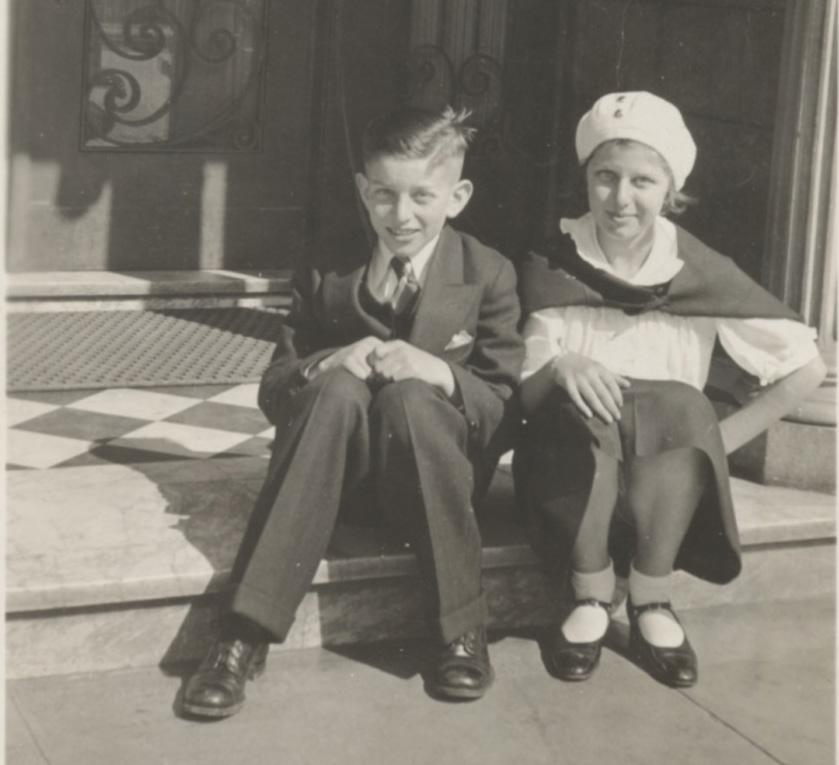
12 minute read
Irvin Roth Remembers
This article is mainly drawn from an autobiographical essay written by Irvin Roth around 2002. His son, Andrew Roth, edited the essay and added some material from Irvin’s other drafts, diaries, and interviews.
When The Richmond Was Young
Advertisement
I was raised in the Richmond district of San Francisco where from the time I was five [in 1925] until about 15 my family lived on 26th Avenue between Anza and Balboa. Our street was a steep hill bordered on each side by modest middleclass homes. On our side of the street there were the typical houses of the area, three-story buildings with large garages on the ground floor and two residences on the second and third levels. The other side of the avenue consisted of onestory bungalows. All homes were built on lots which were 25 feet wide, there was no space between the buildings. Very few were owned by the occupants; buying a home was beyond the capabilities of most families. My parents [David and Nettie Roth] paid $45 a month for a three-bedroom, one-bath flat.
Our neighborhood was mixed culturally, but all were white. There were no African Americans in my elementary or junior high school and only a very few at my high school. There were, however, many Asians, principally Chinese and Japanese, in all my schools. Most of the families on our block were Catholic, at that time the religion of a majority of San Franciscans, divided between Irish Catholics and Italian Catholics. There were, however, about ten Jewish families within two or three blocks. We mixed freely and I felt no discrimination while living in San Francisco. There was little socialization between the adults, but we children freely mixed. Our family socializing was with friends from work-connected relationships and with our family.
In 1929, we relocated across the bay to Oakland, where my parents rented a home at 7615 Holly Street for $57 a month. Here we were hit by a double blow. My father developed pleural pneumonia and was at death’s door for many months. As a result, he lost his job, used up all our savings, and was hit by health costs not covered by insurance. It was at this time that the stock market crash ushered in the Great Depression. My family was unable to recover from these events.
We moved back to San Francisco, to the same apartment building we had left just a few years before, this time renting the other unit in the duplex, 612 (rather than 610) 26th Avenue. My father became a traveling salesman for Keyston Brothers, a wholesaler in leather and shoe fittings that he sold to shoe repair shops. He worked on a small salary, augmented by commissions on successful sales. He was absent from our home from after breakfast on Monday until dinnertime on Friday. On Saturdays he worked in a retail shoe store for $5 a day.
My father was very conservative, a registered Republican and he came from a small town; a “lift yourself up by your own boot straps” kind of thing. He didn’t particularly like unions. Because most of his income was from commissions, his salary fluctuated and because of the Depression seemed always inadequate. My mother had a hard time managing the house and with raising my sister and me. Yet I felt that both of my parents loved me and both gave me emotional security. Of course, I was aware of the family’s struggle to make ends meet, but I never felt poor or deprived. I knew we could not afford many things, but I easily learned to keep my wants modest.
June 25, 1936
“On Thursday evening, June 25, while in Salinas, we received a phone call from Mother in San Francisco. She said, amidst tears, that our house burned down. So we (Dad and I) rushed back, making the trip at an average speed of 50 mph. I didn't see the house until several days later. Only the kitchen was burned completely but the whole house was smoked and smelly. The kitchen was a total wreck. All my fish were killed in the fire and someone stole my tanks while the house was being painted.”
As a result of my father’s absence, we did not share many activities. My mother was essentially a single mom and kept busy with the house and with raising two children. I do not recall ever playing board games or singing or reading together as a family.
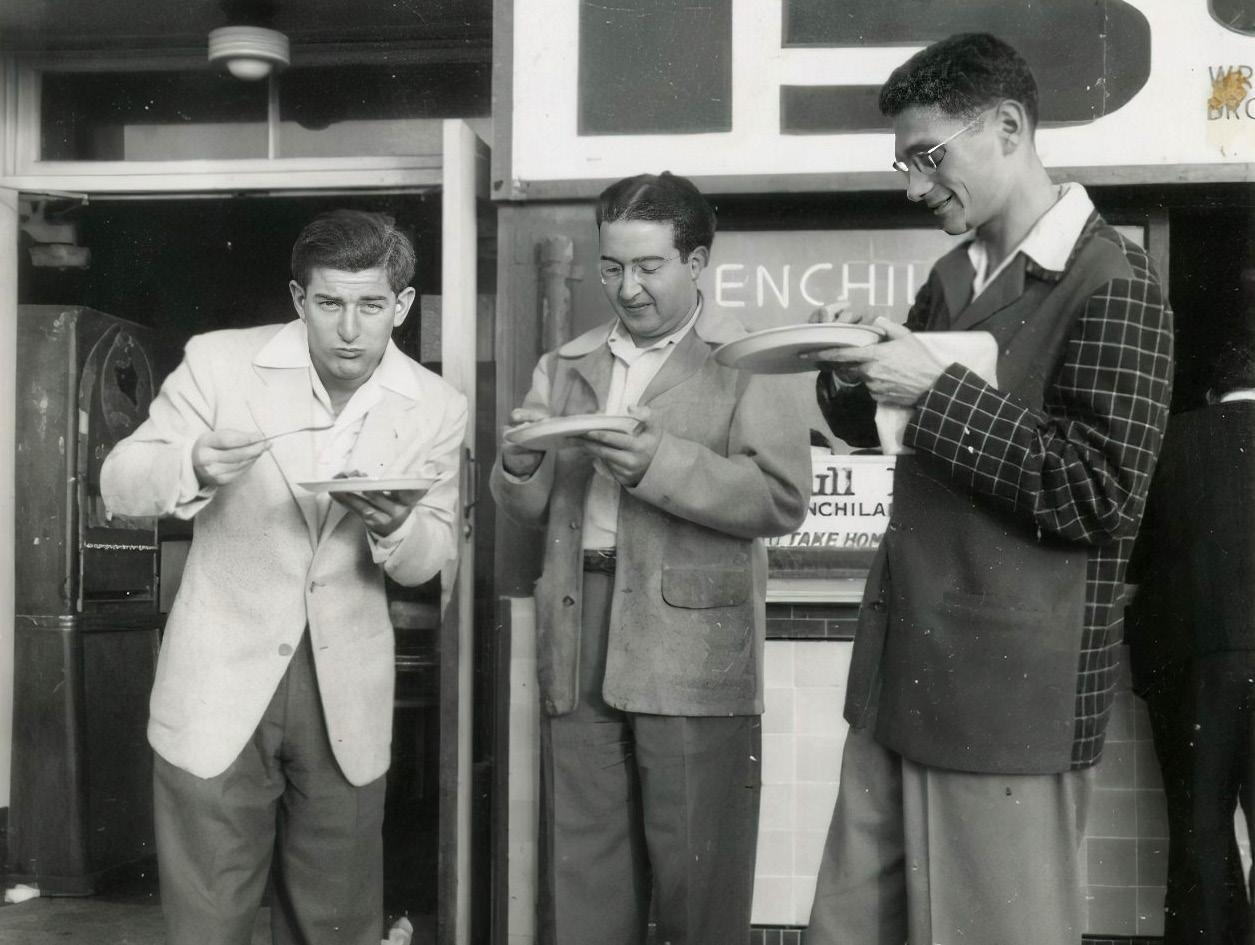
Childhood Pastimes
Since my parents and all our neighbors were busy with the problems of raising children during the Great Depression, the youngsters were left alone to find their own amusements and to play together with little adult supervision. My play was on the streets after school and – in the summer – after dinner. All the children played such games as “One Foot Off the Gutter” and “Kick the Can” on the avenues. Both boys and girls participated in these games. The rules for both were simple and required no special equipment.
We also used the level street on Anza between 25th and 26th avenues as our hockey field. Wooden hockey sticks could be purchased for 25¢ and steel 4-wheel skates for about a dollar or a dollar and a half. After hockey season, we took the skates apart for the wheels with which we made racing cars by nailing the wheels to wooden apple boxes that we got from the corner grocery store. We drove our cars down the hill from Balboa to Anza, where we always posted one of us to watch for cars which, fortunately, were few and far between.
We also played baseball in the empty sand lot on our block, choosing sides and organizing ourselves with no interference from adults. We used the lot as a battlefield where we reenacted World War I by digging trenches and attacking up the hill. At no time did any parent come to see us play ball or hockey or watch us speed down the steep hills.
Even in the first grade, I walked to and from Cabrillo Elementary School, about three blocks from my home, without adult supervision. At age 10 I remember riding alone on the streetcar and paying my 5¢ fare. In elementary school, pupils served as street-crossing guards and not adults as today. I was sent regularly to the corner store to buy groceries and given the money to pay for purchases. We did not have a refrigerator until I was 14 or 15, so daily grocery shopping was necessary.
My best friend until we parted to go to different high schools was Fred Linari, who lived on 22nd Avenue. He and I spent many afternoons in Golden Gate Park, which was only three blocks south of my home. Here we visited the old de Young Museum which at that time had a large room filled with World War I weapons, uniforms, cannon, and even a small French Renault tank. Across the Band Concourse was the Steinhart Aquarium with two outdoor pools with seals and sea lions. The museums were free at that time. We also explored the park, finding wildlife such as salamanders, quail, squirrels, and, in Stow Lake, fish and ducks. We pretended to be fearless explorers.
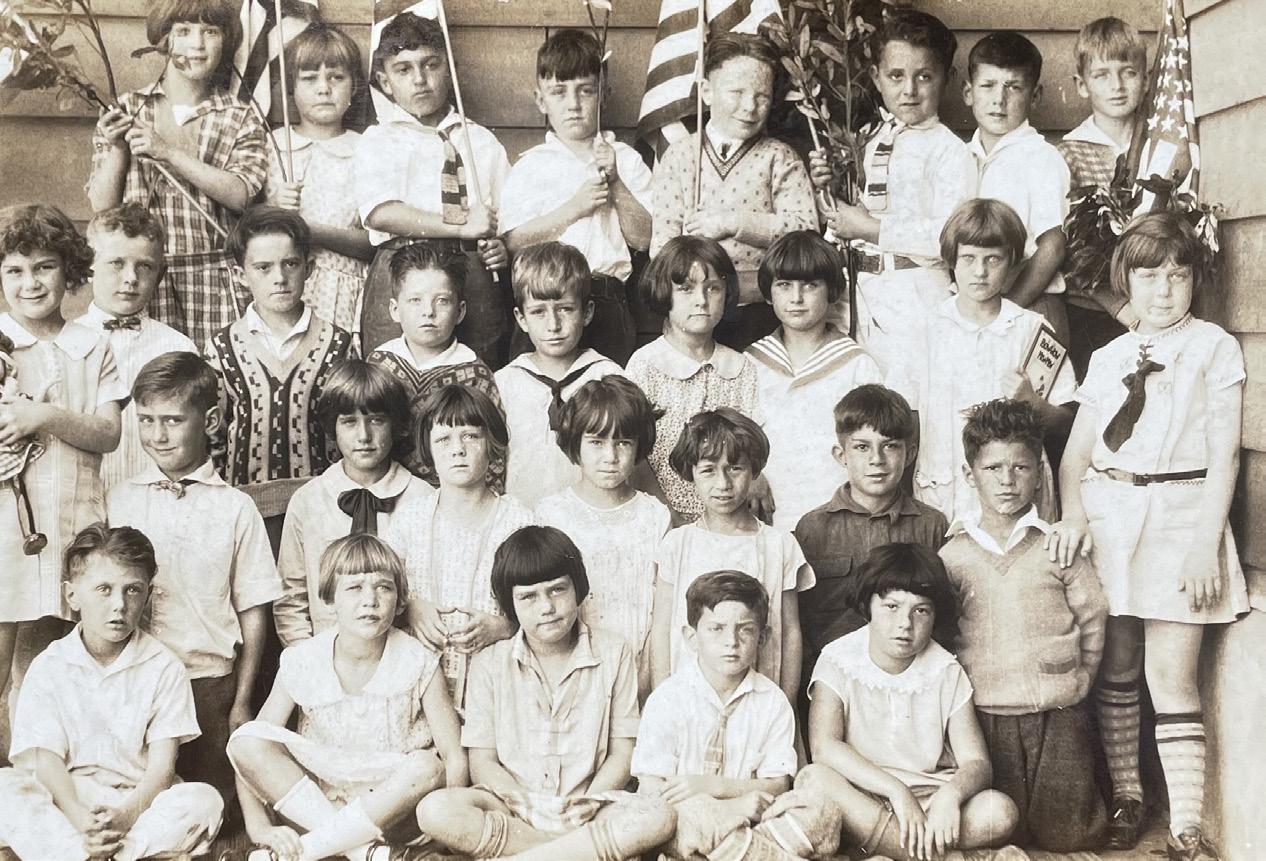
I was an avid reader and still have some of the books my parents gave me as early as 1927. The two closest public libraries, one on 10th Avenue and the other on 38th, were within walking distance and I often visited them. From my early years I walked 16 blocks to the 10th Avenue branch of the public library and the 16 blocks back. My friends as I walked equally long distances to the Alexandria and Coliseum theaters every Saturday for the movies. Later when we had bicycles, we rode longer distances. I collected stamps from an early age and feel that my interest in history and geography owes much to that hobby.
In junior high school (Presidio), I attended many parties with both boys and girls. My diary describes many such occasions and notes my joy in playing Spin the Bottle and Post Office. We considered these kissing games to be particularly daring. I was not associated with school leaders, but I was editor of the school paper in junior high and a member of the student council. I did sit right next to Judy Turner – in Hollywood she became Lana Turner – but would not dare to become a close friend.
Sometimes I went fishing off the pier at Aquatic Park with friends and more rarely with my father. We caught smelt and perch, small fishes but for youngsters, thrilling catches. When the Jewish Community Center opened in the 1930s, I joined and there went swimming and learned to play chess.
I went with friends to the Saturday matinees at local shows –the Star on Clement Street at 24th Avenue, the Alexandria on Geary and 18th Avenue, and the Coliseum on Clement and
December 15, 1937
“Yesterday, December 14 [1937], was the date upon which I was graduated from Lowell High School, having completed by compulsory education. I was one of the class of 223. We had our exercises at Mission High School as Lowell’s auditorium is too small. Everything was very nice and the day shall long live in my memory. In the evening I took Sylvia to the Senior Dance. I had my car and also took Joel Smythe and Jeanette Gorden. I bought Sylvia an orchid. She said she cried when she received it. I hope she was that happy. The dance was held at the St. Francis Hotel and was a big success. I surely had a swell time. The dance broke up at about 12:15 and we went to the Kup. And after to home. The day, all in all, was really wonderful.”
9th. Admission was 10¢ and a candy bar 5¢. The program consisted of a double-bill, that is two full-length movies, a comedy, a cartoon, and a newsreel. Another place of amusement was Playland at the Beach, now, sadly, no longer existent. Here were rides such as the Giant Dipper, Shoot the Chutes, Dodge’m, a merry-go-round, and games of chance as well as side-shows featuring scantily dressed dancing girls and freaks. One could get a big hamburger for 10¢ and the famous Bull Pup enchiladas for the same price.
Entering The Adult World
My family managed the years until about 1939 when the economic situation improved. My Uncle Al and Uncle Bill, my mother’s brothers, owned the Peerless Curtain Mills at 585 Mission Street, and I know now that they helped us. They gave me a job cleaning up on Saturdays for which I was paid 50¢, a sum that covered my weekly spending for shows, streetcar fares, etc. When I graduated from high school (Lowell), I attended San Francisco State College for a semester, but having no goal and little motivation, I dropped out and went to work for my uncles at $25 a week, and I paid my mother for my board & room, I think $5. I worked as a curtain cutter, stock boy, and shipping clerk for two years, hating every minute of it.
I was always interested in politics and history and read avidly. I was concerned with social justice and became radical in thought if not in action. I subscribed to The People’s World, a daily communist paper in San Francisco – to my parents’ discomfort. My friends and I followed the European War with interest and trepidation as we all expected the U.S. to become involved. After the fall of France in June 1940, this seemed so certain that we decided to enlist in the reserves to either get our year over or to be trained. So before the Conscription Act was passed, we all went to the Navy Reserve headquarters on Market Street. Three of my friends were enlisted, but I failed my physical because of my eyesight. So I joined the California
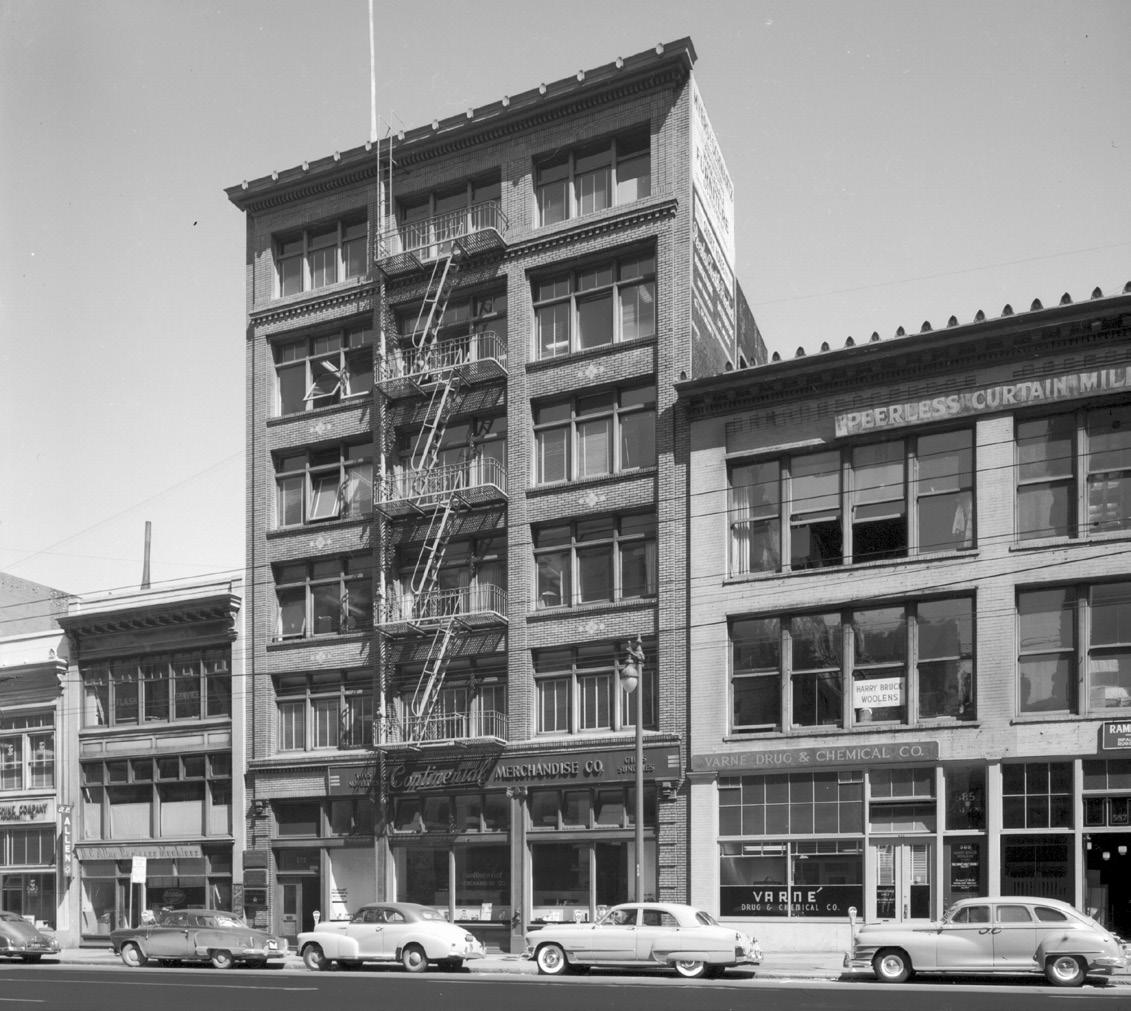
The opening of the Golden Gate Bridge in 1937 was a banner event in San Francisco history. On May 27, over 200,000 people walked across the new bridge. The following day, the bridge opened to traffic and Irvin was among the very first cars to cross. His diary tells the story:
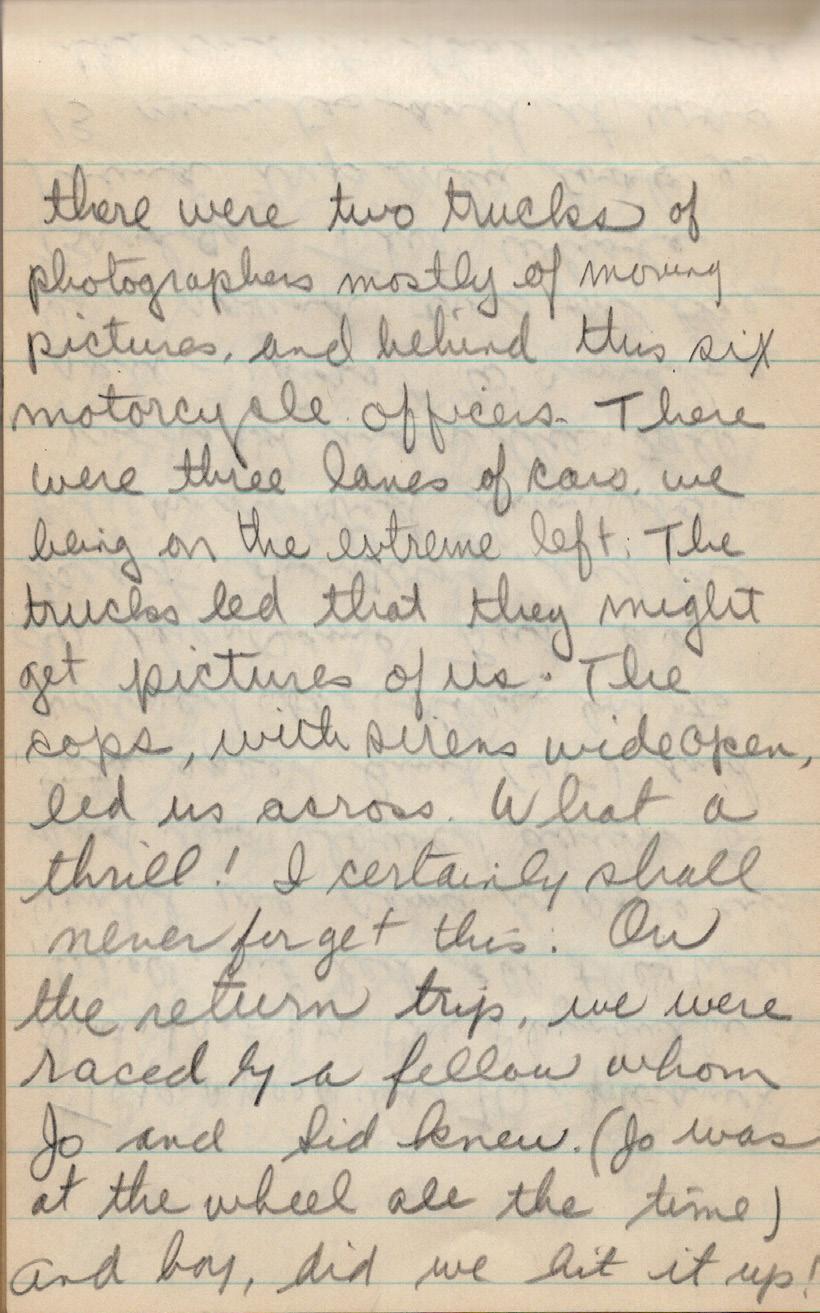

Sunday May 30
Thursday the Golden Gate Bridge was open to Pedestrians. We all got girls and walked across, having lunch on the Marin side…
Since I had my car, Jo, Sid, LeRoy and I decided to stay up all night and try to be the first car across the G.G. Bridge. So we did. However we were second across. When we passed the tollgate on this side there were two trucks of photographers mostly of moving pictures, and behind this six motorcycle officers. There were three lanes of cars, we being on the extreme left. The trucks led that they might get pictures of us. The cops, with sirens wide open, led us across. What a thrill! I certainly shall never forget this. On the return trip, we were raced by a fellow whom Jo and Sid knew. (Jo was at the wheel all the time) and boy, did we hit it up! Top speed was 70 mph and that’s fast for the Plymouth.
Well, we led all the way until we came to some cops and we slowed down to State speed limit (45) and warned the other boy to do the same. But he kept on going, and the officer nabbed him. So we passed under the toll gate – first to make a round trip on the Bridge. The whole round trip only took us 13 minutes and it was the most thrilling, exciting, most colorful quarter hour of my short life. I would stay up two nights to relive those moments.
February 22, 1940

“In the afternoon I went to see Bob A. at his girlfriend’s house. The neighborhood up there [North Beach] is SF’s little Bohemia and all the persons who came in are artists or models or teachers or writers. Although most of them barely scrape along as far as finances are concerned, they get far more out of life than any other group I know. They are spiritually wealthy. We drank two and a half gals. of wine. We played some of Elaine’s records—a few Dwight Fisk[e], some classics, calypsos, and that most intriguing piece, “Strange Fruit.” We talked a great deal. Another thing I like in these people is their freedom of speech. If “bastard” or “goddamn” expresses best a thought, it is said in the mixed company and nobody takes offense.”
National Guard (Company I, 159th Infantry) in September 1940 and entered active service on March 3, 1941, and was sent to Camp San Luis Obispo. I wanted to go into combat because I wanted to erase the misconception that all the Jewish men were in supply and I wanted to be sure I was in combat as an infantry officer.
At the beginning of December 1941, my regiment moved to Fort Ord, California. I welcomed this move as I was now stationed 150 miles closer to my home. On Saturday, December 6, I received a weekend pass to San Francisco. I met my mother, father, and sister, had a good home-cooked meal, and got together with some of my friends.
The next day, December 7, 1941, I drove my father’s car to see my girlfriend, Julia, at her home on Vallejo Street. In the early afternoon we heard a special newsflash on the radio reporting the Japanese attack on Hawaii and Manila. The news was followed by an announcement ordering all military personnel to report to their base immediately. “What does this mean?” asked Julia, who was an immigrant from El Salvador. “It means we are at war and that I must leave at once,” I replied.
I wanted to get back to Fort Ord as soon as possible, as I knew the longer I stayed, the more difficult the parting would be for everyone. However, I did stay for dinner with my family after which my father and mother drove me to the Greyhound Bus Depot in the Pickwick Hotel at Fifth and Mission, where buses had been commandeered by the military to transport soldiers and sailors to their stations. I was worried about my folks and Julia as the newspapers and the radio reports indicated that a Japanese fleet was steaming toward San Francisco. Although these reports proved false, there was a feeling of dread and tension among all of us.
For the next four to five weeks, we patrolled the so-called strategic areas up and down the Pacific Coast, railroad bridges, communication networks, and so forth. I remember being on guard duty down at the beach near the Cliff House and an underground cable wire that stretches all the way to Hawaii and could be reached through manhole covers. I was supposed to march up and down with my rifle acting unconcernedly so that no one would know that there was in fact a cable over there. It was rather difficult because I imagined people would look out and wonder what this soldier was doing marching up and down on the street by Sea Cliff.
Irvin was promoted to Captain and was in command of Company I, 114th Regiment of the 44th Infantry Division, when his unit landed in France in September 1944. From November 1944 to April 1945, he led his company in almost continual combat and earned a Silver Star with Oak Leaf Cluster and a Bronze Star and was awarded two Purple Hearts for wounds in action. In 2011, Irvin was made a Chevalier of the Legion of Honor by the French government in recognition of his role in liberating France. He married Maureen Aarons, whom he met while on leave in London, at the Fairmont Hotel on June 13, 1948. They raised a family in Sunnyvale, California. Irvin Roth passed away on April 19, 2016.




